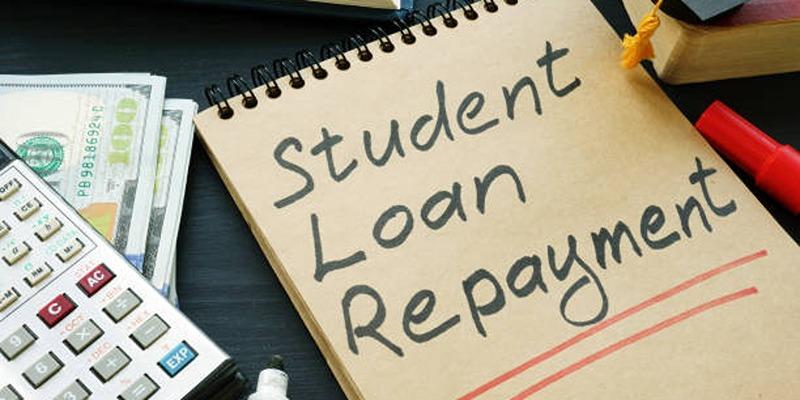Stafford Loans Explained: From Application to Repayment
Oct 31, 2024 By Rick Novak
Navigating the complex landscape of student loans can feel like a daunting task, especially if you're just starting your higher education or about to begin repaying the loans you've already accrued. One of the most common types of federal student loans is the Stafford Loan, a fundamental resource for many students. If you're looking for a comprehensive guide to Stafford Loans, you're in the right place. We'll walk you through everything you need to know from the application process to loan forgiveness options available to you.
What Are Stafford Loans?

Stafford Loans are part of the Federal Direct Loan Program, which allows students and their parents to borrow directly from the federal government. They offer several benefits, such as fixed interest rates and the possibility of subsidized interest, which can save you on your total loan cost. These loans are typically more flexible and affordable compared to private loans and may offer various repayment plans to accommodate post-graduation financial circumstances.
Subsidized vs Unsubsidized Stafford Loans
There are two types of Stafford Loans available to students: subsidized and unsubsidized. The key difference between the two is who pays the interest on the loan while the student is in school and during the grace period after leaving school. Subsidized Stafford Loans are based on financial need, and the government pays the interest as long as you are enrolled at least half-time. Conversely, with unsubsidized loans, the student is responsible for all interest that accrues on the loan from the date of disbursement.
The Application Process:
Applying for a Stafford Loan is the first step towards securing your future through education. This process involves several key steps, all of which are essential to ensure that you're getting the right loan for your needs.
Filling Out the FAFSA
To apply for a Stafford Loan (or any federal financial aid program), you must complete the Free Application for Federal Student Aid (FAFSA). The FAFSA is a detailed form that collects information about your family's financial situation. Make sure you have all the necessary documents on hand, and be careful to provide accurate information, as this will determine the aid for which you are eligible.
Accepting the Loan Offer
Once your FAFSA is processed, you'll receive a financial aid package from your school, which may include a Stafford Loan offer. Review the terms of the loan offer and accept only the amount you need, as you'll be responsible for repaying it with interest.
Stafford Loan Interest Rates and Fees:
The interest rate on a Stafford Loan is fixed and set by the government. It is typically lower than the rates offered by private lenders. However, be aware that there may be loan origination fees associated with the loan, which are deducted from the loan proceeds. It's important to understand the exact terms of your loan, including the interest rate and any associated fees.
Interest Capitalization
Interest capitalization is when any unpaid interest is added to the loan's principal balance. This can happen at the end of a loan's grace period or deferment, which means you will then pay interest on a larger amount over the life of the loan.
Repayment Plans and Options:
The pleasant reality of the Stafford Loan program is that it provides several options for you to repay your loan. The repayment process is highly individualized, and your choice depends on your financial situation, future prospects, and personal preferences.
Graduated Repayment Plan
The graduated repayment plan starts with lower monthly payments that increase over time, usually every two years. This is suitable for borrowers who expect their income to grow significantly over the years.
Income-Driven Repayment Plan
Income-driven repayment plans base your monthly loan payments on your income. There are several types, but the general idea is that a portion of your discretionary income is used to calculate your payments. This provides a safety net if you experience financial hardship, as your payments are lower but may result in paying more interest over time.
Loan Consolidation and Refinancing
If you have multiple federal student loans, consolidation can simplify your repayment process by combining them into one loan with a single monthly payment. Refinancing may be an option for those looking for lower interest rates, but it typically means giving up federal loan benefits, such as income-driven repayment and loan forgiveness programs.
Loan Forgiveness Opportunities:
Stafford Loan borrowers may also be eligible for loan forgiveness programs under certain conditions. One notable program is the Public Service Loan Forgivenes (PSLF) program, designed for those working in public service jobs for government or non-profit organizations. By making 120 qualifying payments while employed full time by a qualified employer, your remaining loan balance may be forgiven. Additionally, teachers in low-income schools may qualify for the Teacher Loan Forgiveness Program after five consecutive years of service.
Stafford Loan Forgiveness and Discharge:

Under certain circumstances, you may qualify for loan forgiveness, which means that the remaining balance of your loan is forgiven after you have made a certain number of qualifying payments. This typically applies to those working in public service or certain non-profits.
Public Service Loan Forgiveness
The PSLF program forgives the remaining balance on your Direct Loans after you have made 120 qualifying monthly payments under a qualifying repayment plan while working full-time for a qualifying employer.
Teacher Loan Forgiveness
Teachers who work for five consecutive years in a low-income school or educational service agency may be eligible for up to $17,500 in loan forgiveness.
Loan Discharge
In some cases, a borrower's federal student loan can be discharged, which means they are no longer required to make payments on the loan. This can happen in cases of total and permanent disability, closure of a school, or other extenuating circumstances.
Conclusion:
Stafford Loans are an excellent option for financing your education with their low interest rates and various repayment plans. However, it's important to understand the application process, interest rates and fees associated with the loan, and the available repayment options. Additionally, being aware of potential forgiveness or discharge opportunities can provide relief in certain circumstances. Make sure to carefully consider all aspects before accepting a Stafford Loan offer and always stay on top of your loan payments to ensure successful repayment. So, it is important to weigh all the options and make informed decisions when it comes to financing your education with loans. As always, it's best to consult with a financial advisor or your school's financial aid office for personalized guidance.

A Guide to Self-Funding Higher Education - Paying For College

10 Exceptional Extended Car Warranty Companies for Ultimate Peace of Mind

How Much Are Towing Fees? Everything You Need to Know

The Essentials of Restrictive Covenants: A Comprehensive Guide

Things you should know about short-term car lease

Treasury Notes Explained: The Secret Behind Your Mortgage Rate

10 Tips for Aspiring Commodity Broker

Getting to Grips with the Basics of PITI: Principal, Interest, Taxes and Insurance

The World of Kids' Allowances: A Parent's Guide to Financial Planning

